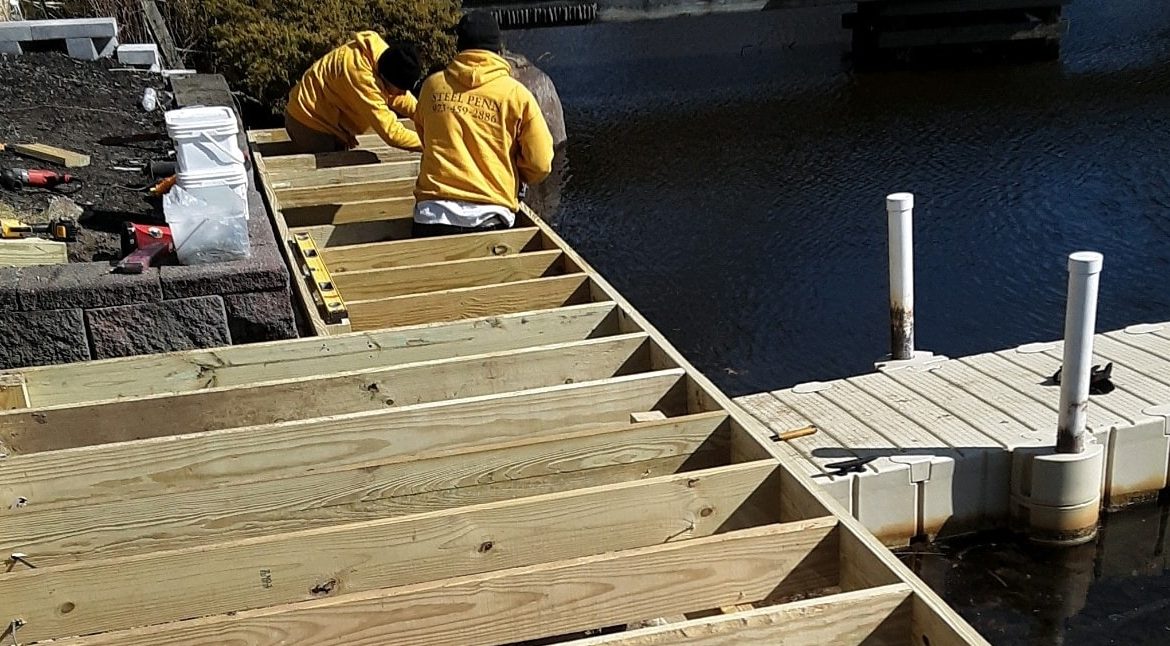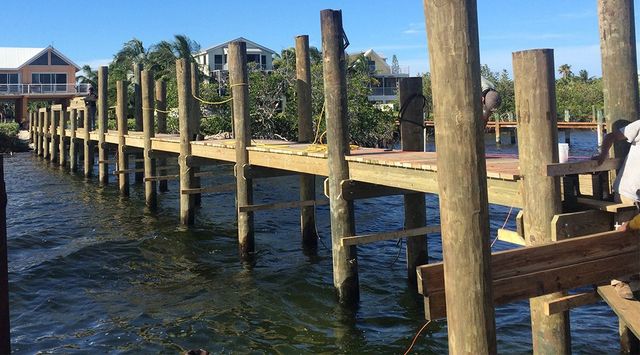Leading Indicators You Required Specialist Dock Repairs This Period
Leading Indicators You Required Specialist Dock Repairs This Period
Blog Article
Effective Dock Fixing Techniques: Making Certain Architectural Integrity
Making sure the architectural honesty of docks through effective repair techniques is paramount for the longevity and safety and security of aquatic centers. This involves a multi-faceted method beginning with thorough inspections making use of advanced technologies like sonar equipment and remotely ran vehicles (ROVs) to identify both visible and hid problems. Consequently, selecting the ideal repair work products, such as composite products and corrosion-resistant alloys, is essential for sturdiness. Architectural reinforcement techniques, consisting of the implementation of cross-bracing systems and load-distribution plates, play a crucial duty in mitigating anxiety points. The relevance of these techniques ends up being apparent when checking out advanced repair methods and preventative maintenance strategies.
Analyzing Dock Damages
Assessing dock damage is a crucial initial action in making sure the structural honesty and security of any type of docking facility. Secret elements to analyze consist of the dock's structure, pilings, decking, and equipment (Dock Repairs).
Architectural designers or qualified examiners commonly execute these evaluations utilizing specialized tools and methods. As an example, underwater inspections may utilize finder equipment or from another location ran cars (ROVs) to detect submerged damage. Above water, visual assessments are complemented by making use of dampness meters and other analysis tools to uncover underlying issues not right away noticeable to the naked eye.

Choosing Fixing Products
Selecting the ideal repair service materials is an essential step in the dock restoration process, one that straight affects the durability and performance of the fixed structure. Product option have to be driven by variables such as environmental problems, load-bearing demands, and compatibility with existing dock elements. Timber is a standard option for docks due to its all-natural durability and aesthetic appeal. Selecting the best type of timber, such as pressure-treated lumber or naturally rot-resistant species like cedar or teak wood, is vital to withstand marine atmospheres.
Along with timber, composite materials are progressively popular because of their longevity and low maintenance demands. Compounds, normally made from a blend of plastic and timber fibers, provide superb resistance to rot, insects, and UV damages. For metal anchors, choosing corrosion-resistant alloys such as galvanized steel or marine-grade aluminum is necessary to avoid corrosion and guarantee architectural integrity in saline water conditions.
Epoxy resins and marine-grade sealers are essential for repairing cracks and sealing joints, supplying a water resistant obstacle and boosting the dock's overall strength. By carefully picking high-grade materials, dock repair services can achieve lasting results, consequently securing against future destruction and guaranteeing risk-free, reliable usage.
Structural Reinforcement Methods
Efficient architectural support techniques are essential in making sure the security and durability of dock repair work. One essential method involves using steel or composite reinforcement bars (rebar) within concrete frameworks. Rebar supplies additional tensile stamina, preventing fractures and distributing lots more evenly. This method is particularly effective for anchors subjected to hefty loads or harsh ecological problems.
Another necessary technique is the application of fiber-reinforced polymers (FRP) These products supply high strength-to-weight ratios and outstanding resistance to deterioration, making them ideal for enhancing wooden or concrete docks. FRP can be applied in sheets or strips and bound with epoxy materials to improve architectural integrity.
Supporting and anchoring systems also play an important function in structural support. Cross-bracing, using steel or wood beam of lights, can combat lateral forces, lowering guiding and movement. Anchoring systems, such as helical piers or driven heaps, provide a stable structure by moving lots to deeper, a lot more stable soil layers.
Lastly, the combination of load-distribution plates can help disperse weight much more equally throughout the dock's surface, reducing localized stress and anxiety factors. These methods collectively ensure that anchors stay durable and secure, efficient in enduring the rigors of their functional atmosphere.
Advanced Fixing Approaches

One more innovative technique includes underwater welding, which enables repairs to be performed without the requirement to dewater the location. This technique is particularly advantageous for dealing with structural concerns in submerged dock parts, making certain minimal disturbance to operations. Enhanced welding methods, coupled with robot systems, provide precision and reliability, thus prolonging the life-span of the dock.
Furthermore, cathodic protection systems are executed to stop deterioration in metal dock frameworks. By utilizing sacrificial anodes or satisfied existing systems, these techniques effectively alleviate the go to my site electrochemical processes that cause material wear and tear.
Last but not least, advanced tracking innovations, such as structural health and wellness surveillance (SHM) systems, supply real-time information on the condition of dock structures. These systems allow aggressive maintenance and prompt treatments, eventually making sure the lasting architectural honesty of the dock.
Maintenance and Avoidance
Maintenance and avoidance are fundamental principles that underpin the durability and safety and security of dock structures. Normal evaluations are paramount, permitting very early discovery of deterioration, possible weaknesses, and ecological impacts. A positive strategy, including regular look for rust, rot, and architectural shifts, alleviates costly repairs and lengthens the dock's functional life.
Safety nets should include using safety finishes to steel components to safeguard versus rust and using treated wood to stand up to degeneration. Additionally, making sure correct water drainage and ventilation can avoid water build-up, which is an usual reason for structural destruction. Incorporating high quality products and sticking to supplier standards during construction and repair work phases additionally play critical roles in enhancing toughness.

Educating workers in dock maintenance best techniques guarantees consistent application of preventive actions. Leveraging technological advancements, such as drones for evaluations and sensing units for real-time monitoring, can additionally improve upkeep efforts. By prioritizing maintenance and avoidance, dock owners can make certain structural honesty, functional safety, and cost-effective management over the dock's life-span.
Conclusion
In conclusion, preserving the architectural integrity of aquatic facilities demands thorough dock repair work techniques. Complete evaluations making use of sophisticated devices uncover both noticeable and concealed problems, while the option of proper repair materials boosts sturdiness. Executing architectural support techniques addresses stress and anxiety points successfully. Advanced repair methods, coupled with routine upkeep practices, guarantee the dock continues to be functional and safe under diverse ecological problems. Adopting these methods significantly you can look here prolongs the life expectancy and capability of marine facilities.
Ensuring the structural integrity of docks through efficient fixing strategies is paramount for the longevity and security of marine facilities.Choosing the click to read proper fixing products is an essential action in the dock reconstruction procedure, one that straight influences the longevity and efficiency of the fixed framework.Reliable architectural reinforcement techniques are vital in guaranteeing the stability and longevity of dock fixings. By focusing on upkeep and prevention, dock owners can ensure architectural stability, operational safety and security, and affordable administration over the dock's life expectancy.
In final thought, preserving the architectural honesty of marine facilities demands detailed dock repair work techniques.
Report this page